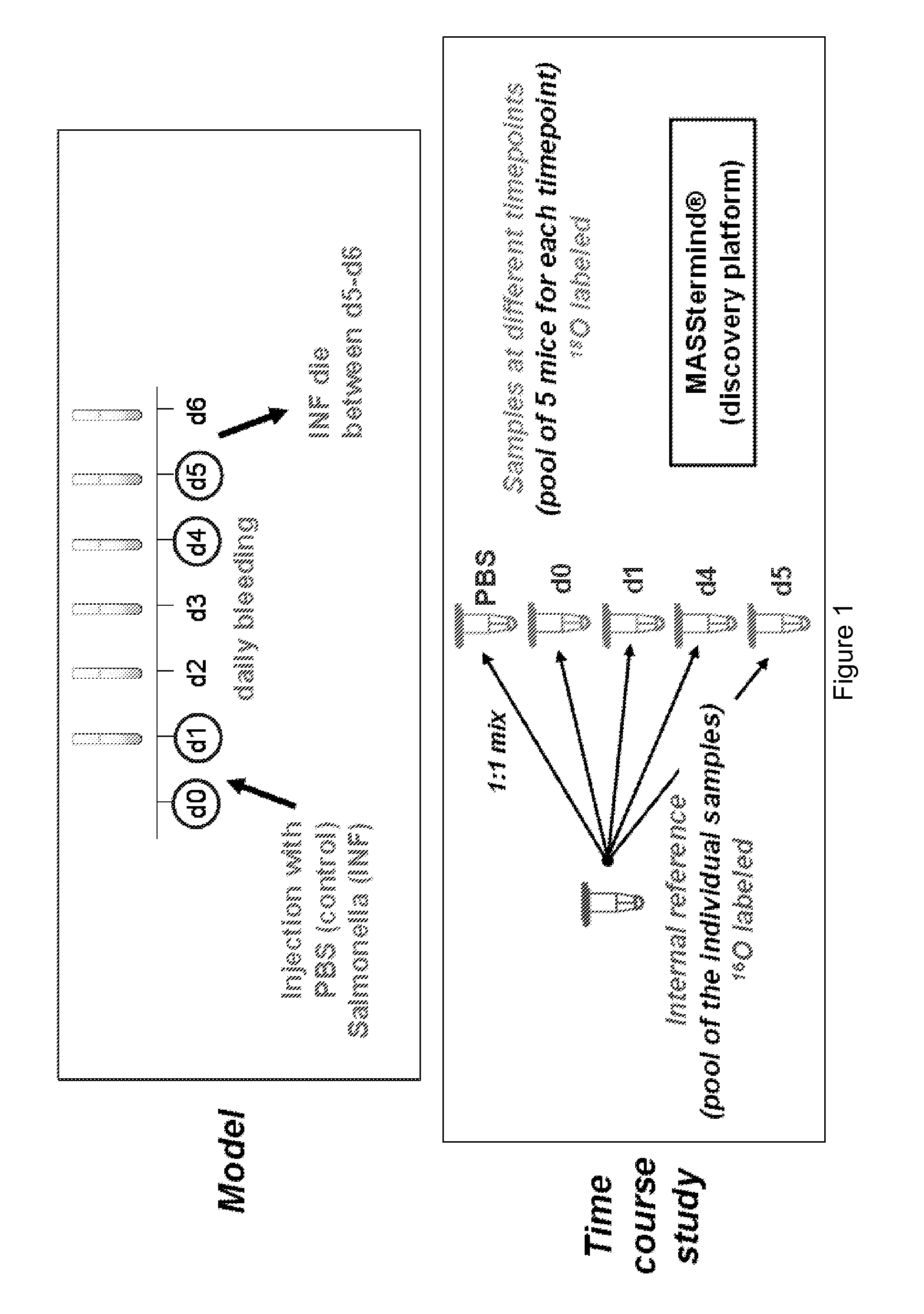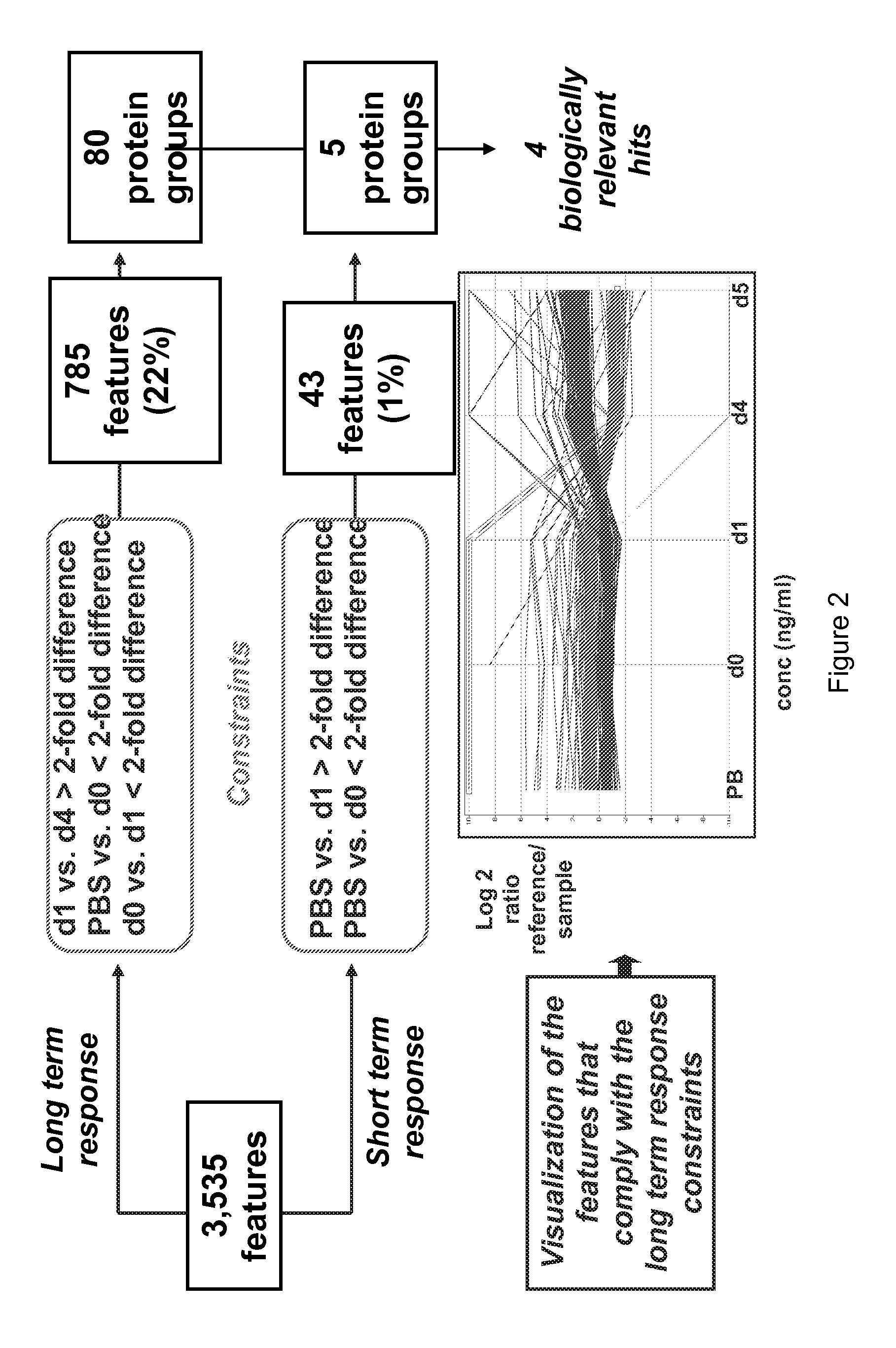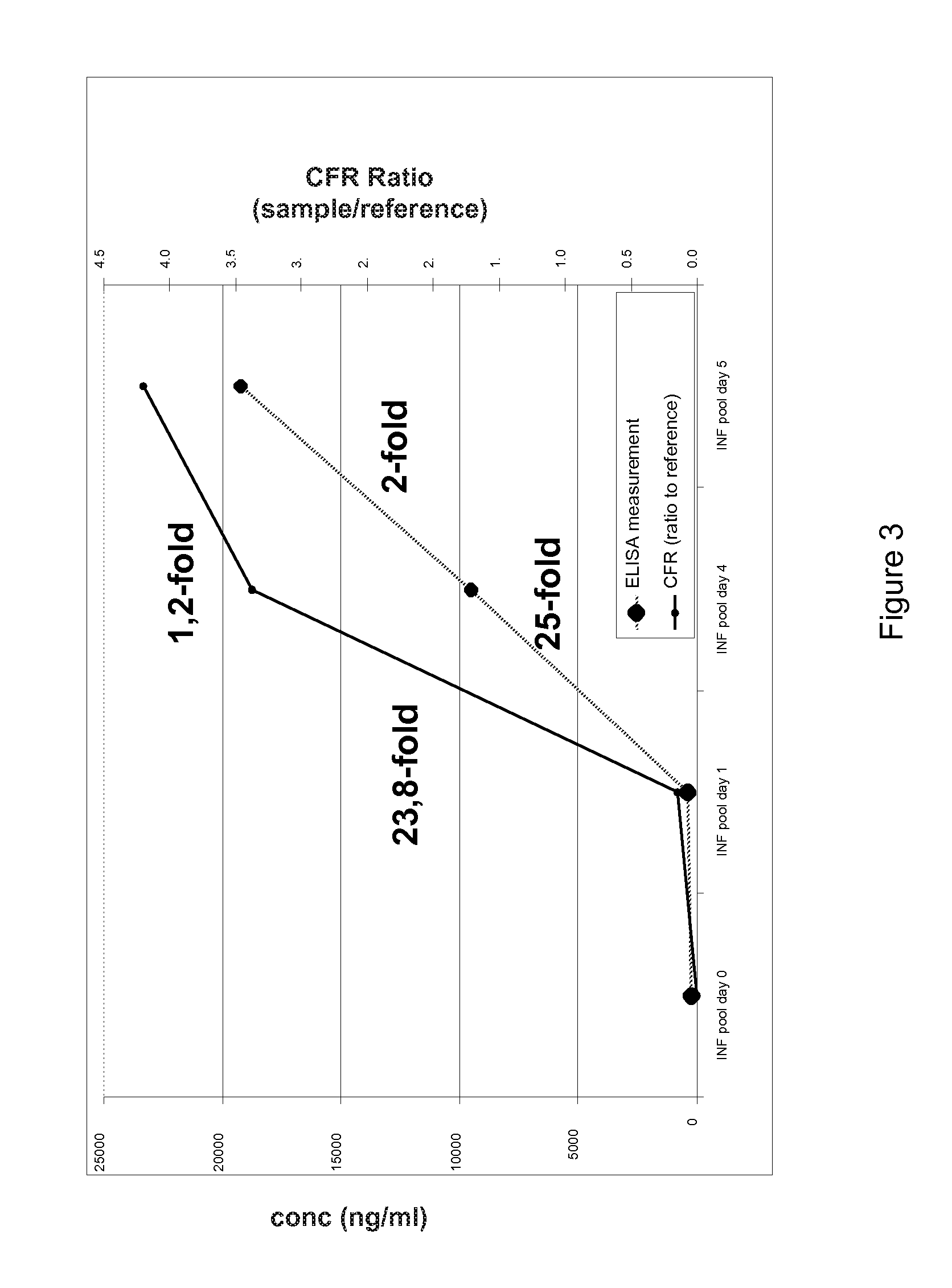Biomarker for diagnosis, prediction and/or prognosis of sepsis and uses thereof
a biomarker and sepsis technology, applied in the field of protein and/or peptide based biomarkers, can solve the problems of inability to effectively detect early sepsis, many drugs that may be beneficial for some patients may not work well, or not at all, and achieve accurate, rapid, and sensitive prediction.
- Summary
- Abstract
- Description
- Claims
- Application Information
AI Technical Summary
Benefits of technology
Problems solved by technology
Method used
Image
Examples
example 1
Identification of New Biomarkers for Sepsis in a Mouse Sepsis Model
[0132]We used a mouse sepsis model in order to identify new sepsis biomarkers. At day 0, the mice were injected with PBS (control) or Salmonella (infected). Blood samples were taken from both control and infected mice every 24 h by retro-orbital bleeding. Mice of the infected group show no immediate signs of disease just after infection, but suddenly become ill after 4-5 days and then die within 24 h. In the obtained blood samples, we analysed the changes in protein expression using mass spectrometric detection of protein levels using our previously published COFRADIC™ technology platform.
[0133]All serum samples were depleted for the most abundant proteins using an Agilent column. Depletion efficiency was checked using ELISA and Western Blot analysis. The reference pool was prepared at this stage and this reference was considered as a normal sample for the rest of process. Samples were prepared for MASStermind™ analy...
example 2
Verification of the COFRADIC™ Results in Blood Samples Obtained Through the Mouse Sepsis Model
[0135]In order to verify the results of the N-terminal COFRADIC™ technology as outlined above, we performed ELISA and Western blot experiments on both markers in the blood samples obtained from the mice in the test set-up (i.e. PBS-injected control mice and mice infected with Salmonella at d0, blood samples taken at d0-d7.) As can be seen from the figures, the NGAL expression in the mice blood samples increases between d1 and d4 after infection (25-fold increase) and keeps increasing up to d5, in an analogous manner to the COFRADIC™ measurements, thereby confirming the COFRADIC™ identification of a change in protein level during sepsis in the mouse model. These results were further confirmed in an independent set of mouse samples.
[0136]Also for the TREM-like-transcript-1 biomarker, we could compare the test results obtained from the COFRADIC™ technology platform with Western-blot analysis o...
example 3
Confirmation of the Biomarkers in Human Sepsis Samples
[0137]In order to be able to extrapolate the test results in the mouse sepsis model to human sepsis prognosis and diagnosis, we analysed the expression level of NGAL in human samples obtained from patients having either SIRS or Septic MODS. ELISA results of NGAL expression in human sepsis samples as compared to healthy samples confirmed again that, although the error margin is quite large due to the small sample size, the human NGAL protein is also up-regulated in human SIRS and sepsis (MODS) samples as compared to samples obtained from healthy subjects.
[0138]For TREM-like-transcript-1 the same was done, with comparable results, confirming TREM-like-transcript-1 as being a new candidate sepsis marker.
[0139]In order to increase the sensitivity, an immuno-precipitation step was included prior to Western Blot. This immuno-precipitation was performed on human serum & plasma from healthy controls and also on serum from patients suffer...
PUM
| Property | Measurement | Unit |
|---|---|---|
| temperature | aaaaa | aaaaa |
| pH | aaaaa | aaaaa |
| blood pressure | aaaaa | aaaaa |
Abstract
Description
Claims
Application Information
 Login to View More
Login to View More - R&D
- Intellectual Property
- Life Sciences
- Materials
- Tech Scout
- Unparalleled Data Quality
- Higher Quality Content
- 60% Fewer Hallucinations
Browse by: Latest US Patents, China's latest patents, Technical Efficacy Thesaurus, Application Domain, Technology Topic, Popular Technical Reports.
© 2025 PatSnap. All rights reserved.Legal|Privacy policy|Modern Slavery Act Transparency Statement|Sitemap|About US| Contact US: help@patsnap.com



